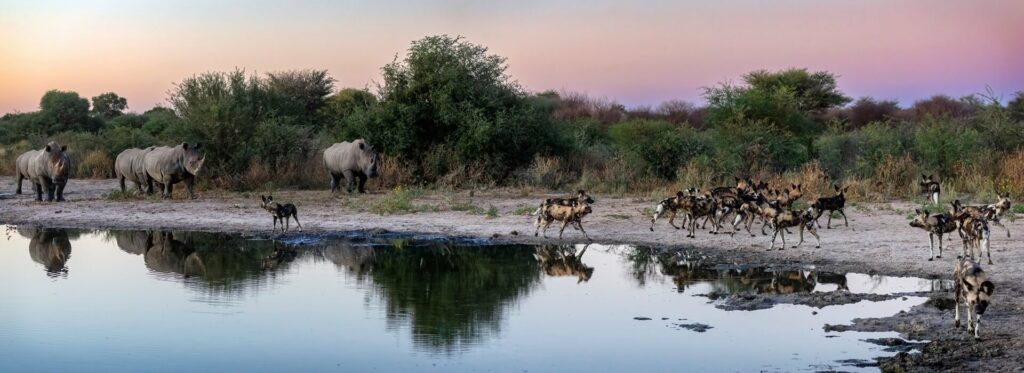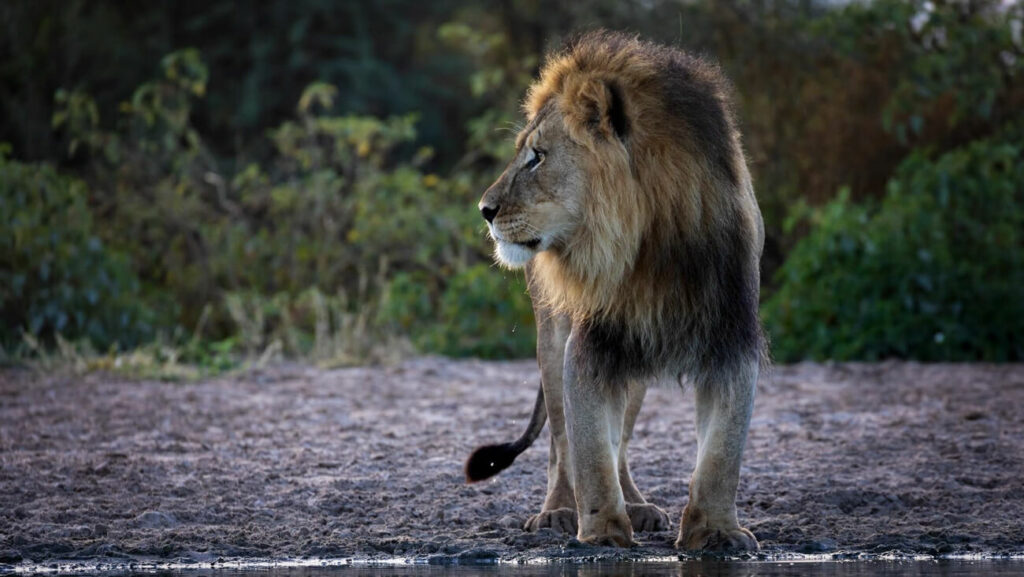Join Our African Wild Dog Monitoring: Protect an Icon
Wild Dog Monitoring: Conservation Begins with Understanding
African wild dogs (Lycaon pictus), with their swirling coats and captivating social bonds, are among Africa’s most iconic – and tragically, most endangered – predators. We call them ‘painted wolves’ out of admiration for their unique markings, but African wild dogs are neither wolves nor painted by anyone but nature. Once an estimated half a million African wild dogs roamed the continent, now a mere 6 500 individuals remain. Join our crucial mission to monitor these fascinating creatures, unlocking new insights that will not only drive their conservation but inform broader efforts to protect fragile ecosystems.
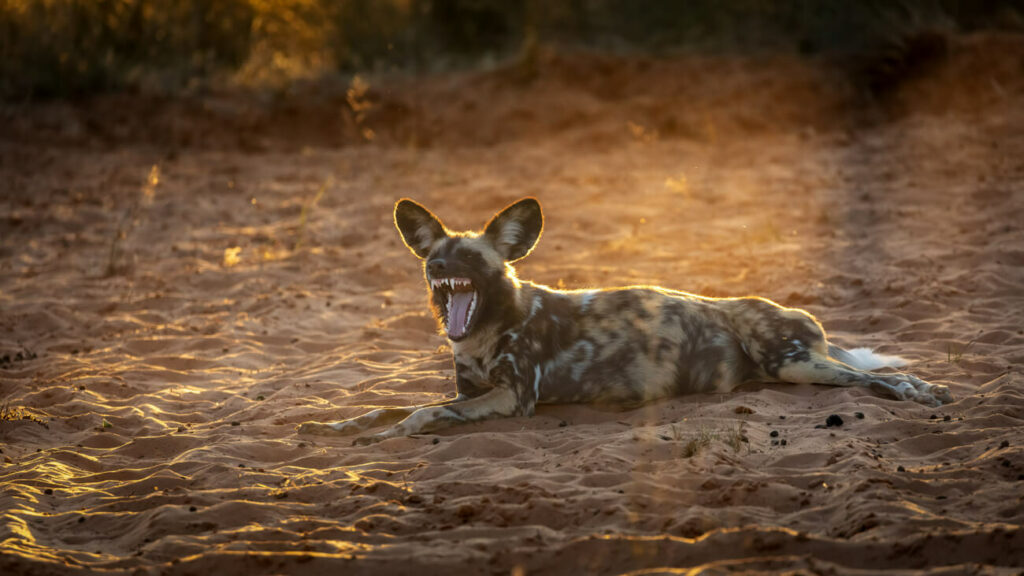
Beyond the Painted Wolf: Demystifying the African Wild Dog
• Naming: Once nicknamed “Cape hunting dogs,” the scientific name Lycaon pictus translates to “painted wolf-like,” reflecting their unique appearance with striking, multi-colored coats. Despite their name and appearance, African wild dogs are not direct relatives of domestic dogs or wolves. Instead, they belong to their own distinct genus, Lycaon.
• Evolution: Diverging from other canids over a million years ago, African wild dogs are evolutionary marvels, their lineage hinting at early pack-hunting strategies.
• Appearance: Weighing 44-77 lbs (20-35 kg) and standing 24-30 inches (60-75 cm) tall, their mottled coats act as camouflage. Their fur boasts a unique pattern of black, white, tan, and yellow blotches, making each individual distinctive. Large, rounded ears, long legs, short muzzles, and bushy tails with a characteristic white tip distinguish their look.
• Incredible Athletes: Capable of sprints up to 44 mph (71 km/h) and long chases, they’re among Africa’s top endurance hunters. Their long legs, streamlined bodies, and large hearts grant them incredible endurance, allowing them to tirelessly pursue prey over long distances.
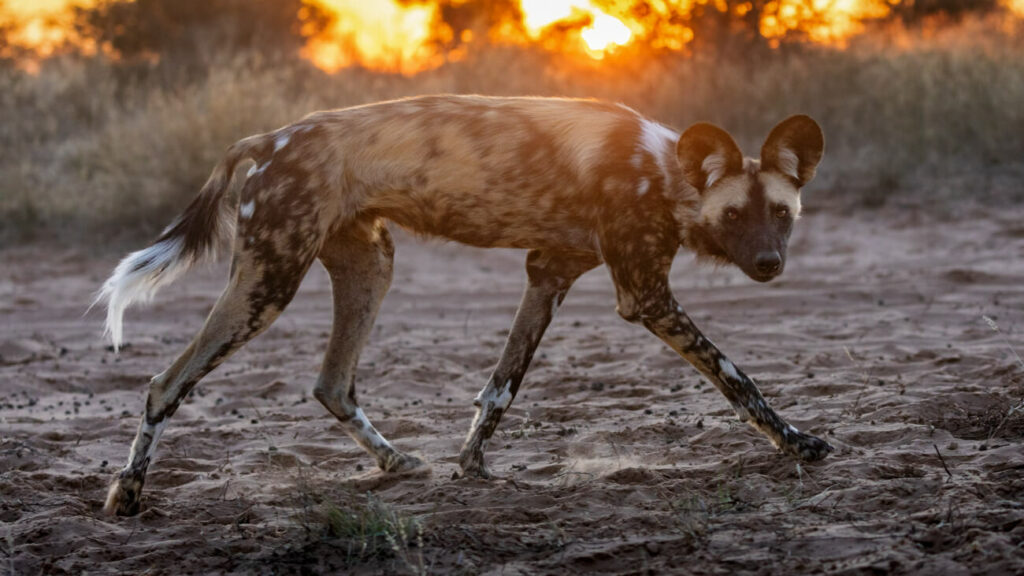
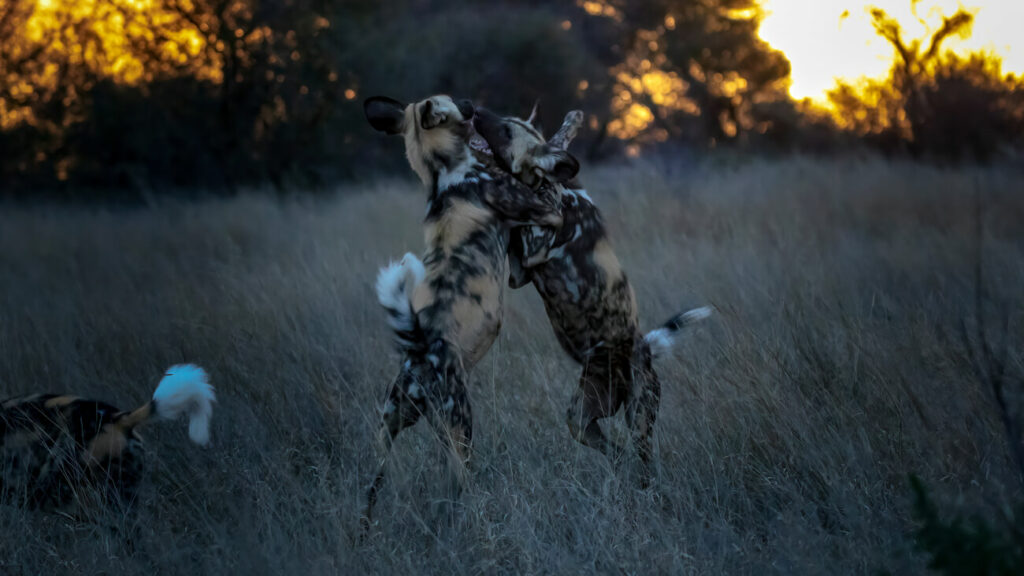
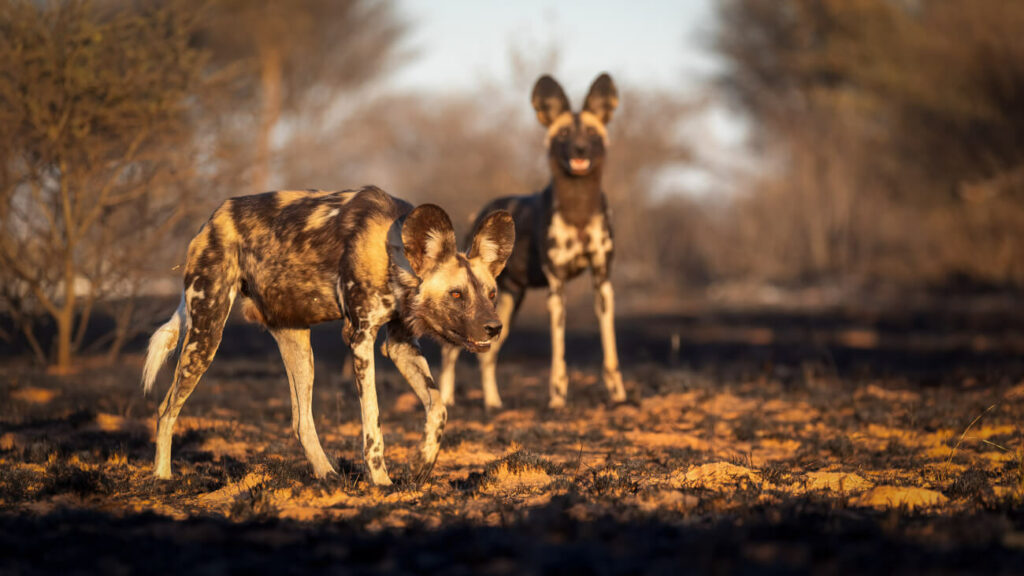
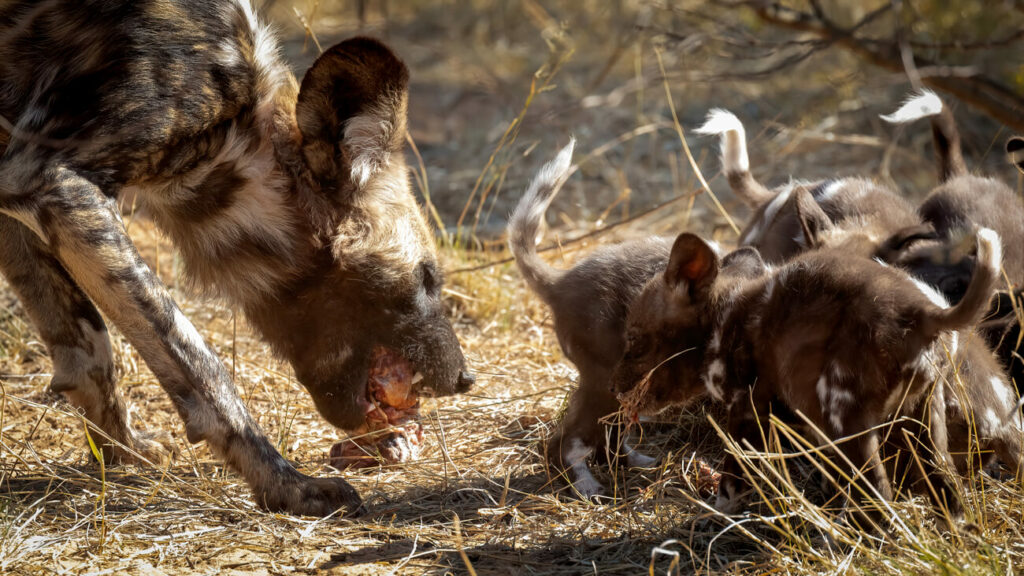
The Power of the Pack: Why Wild Dog Social Life Matters
• Cooperative Care: The entire pack raises pups, from feeding to providing defense. This strengthens group survival.
• Pack Dynamics: African wild dogs are highly social animals living in close-knit packs typically ranging from 6-20 adult individuals. Pack life centers around the dominant breeding pair, with other pack members cooperatively hunting, raising pups, and defending their territory.
• Hierarchy and Communication: African wild dogs maintain a distinct social hierarchy with the alpha male and female leading the pack. They communicate through various vocalizations, body language, scent cues, and even elaborate greeting ceremonies that reinforce social bonds create a tight-knit society. Observing this fascinates and informs human understanding of social intelligence.
• Cooperative Hunting: These canids are skilled cooperative hunters, employing strategies to successfully take down prey much larger than themselves. Their hunts are characterized by relentless chases, coordinated attacks, and efficient consumption of their kill.
African Wild Dog Monitoring: Wild at Heart, Precarious Existence
• Temperament: Curious, bold, yet not inherently aggressive toward humans, conflict generally arises when defending territory or kills.
• Reproduction: African wild dogs breed seasonally with only the alpha female typically producing pups. If conditions are suitable with prey abundant, they can den twice in a year with Beta and/or Charlie females birthing too. After a 70 day gestation period, litters range from 2-20 pups, born in a communal den site (typically an abandoned aardvark or porcupine burrow). The entire pack participates in raising, feeding, and protecting the pups. This high output is counterbalanced by high pup mortality in the wild.
• Historical Loss: Once found across most of sub-Saharan Africa, they now inhabit scattered pockets at a fraction of their original range, with strongholds in southern and parts of eastern Africa. Wild dog monitoring and research throughout Africa shows that this is the primary cause for the rapid decline of their numbers throughout the continent as, unlike most of the other carnivores, wild dogs require large contiguous land with large enough prey populations to sustain their impact.
• Available Habitat: While the size of land needed is subject to many variables, and perhaps less than the common rhetoric, the truth is that most of Africa has been fragmented into private properties for agricultural, mining, industrial, or other purposes. Much of Africa’s wilderness areas are divided into smaller areas, and the few that are large enough and willing to sustain African wild dogs, are likely already home to them and unable to accommodate more.
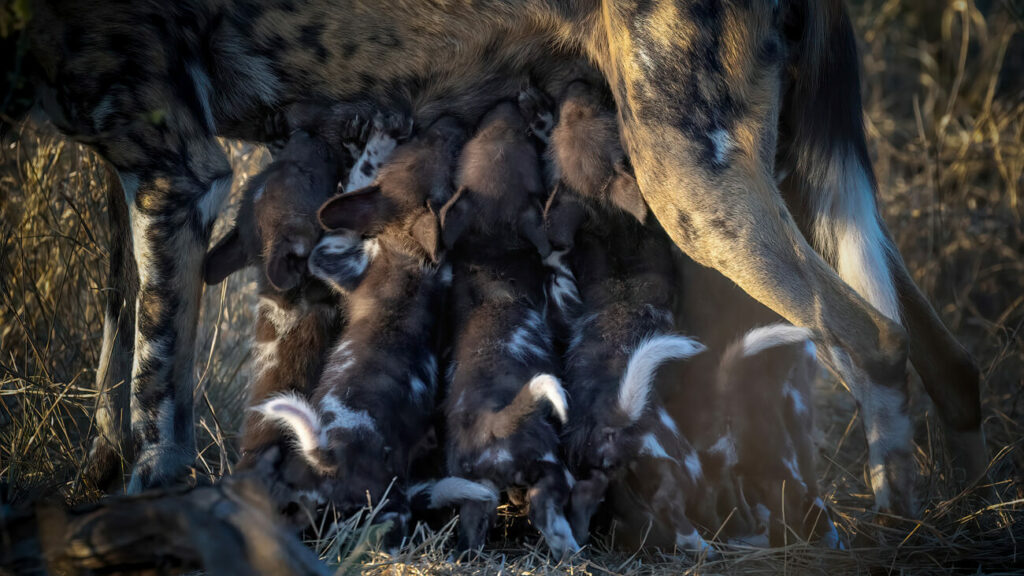
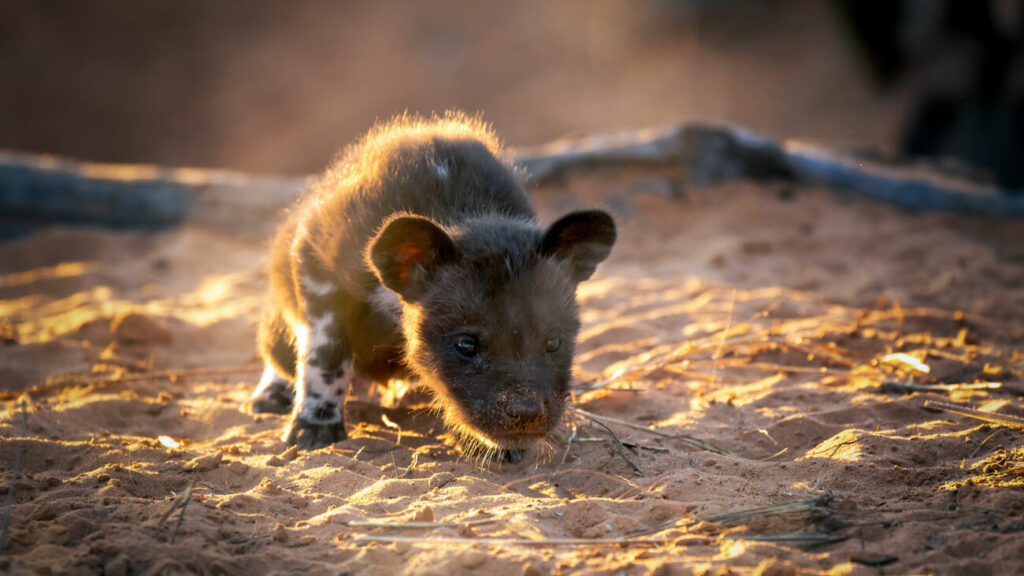
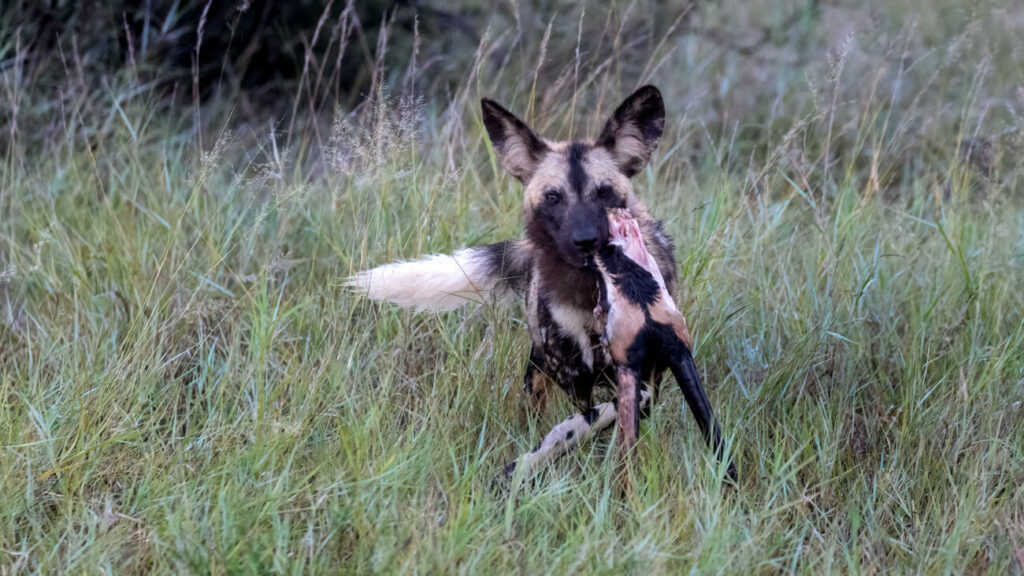
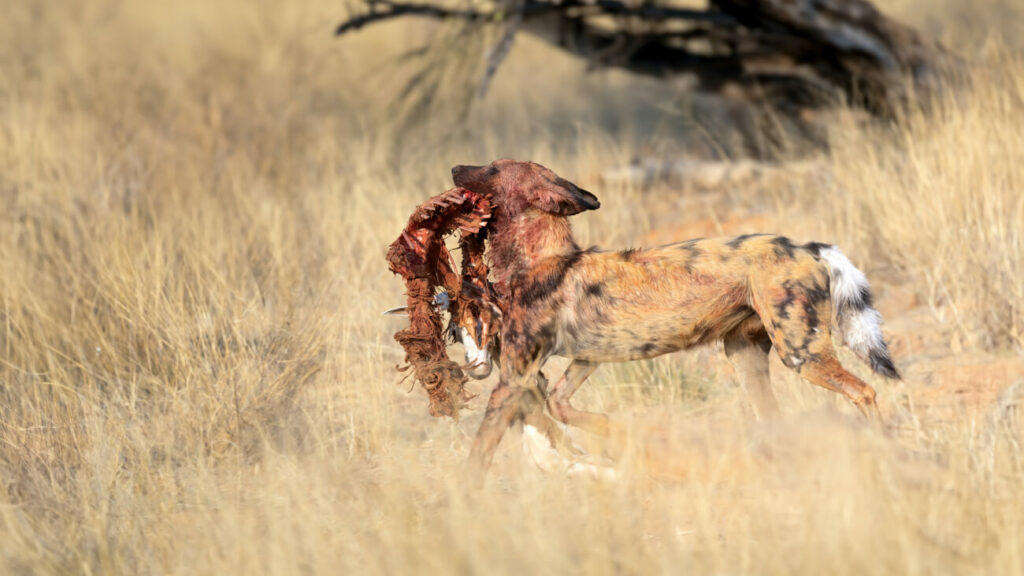
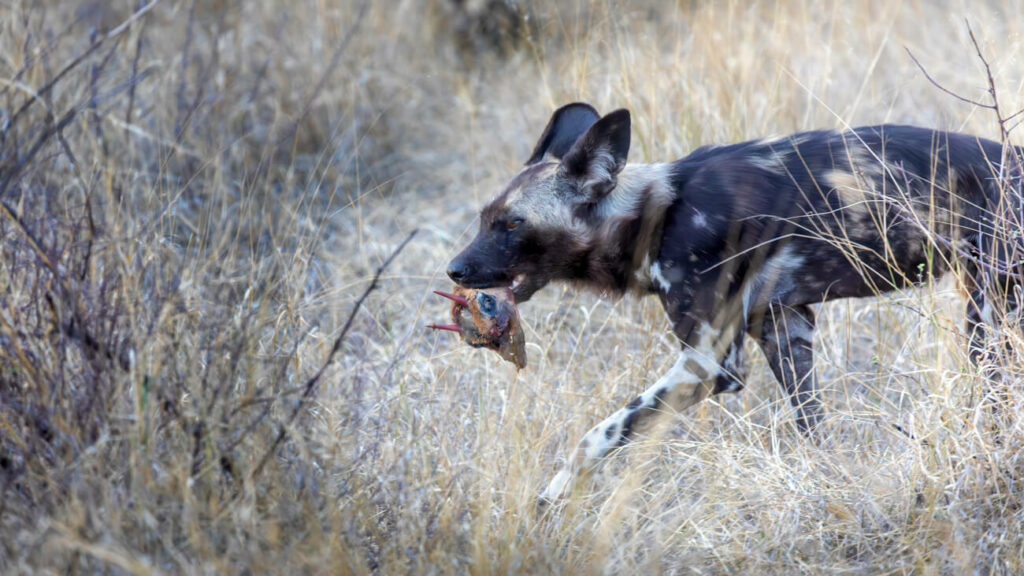
• Diet & Ecology: Highly effective cooperative hunters targeting medium-sized ungulates, their prey choices impact biodiversity and balance the savanna ecosystem. They commonly target medium-sized antelopes like impala, as well as other species like wildebeest, warthog, and even larger prey like zebras. Unlike most areas, African wild dogs on Khamab Kalahari Reserve favor large prey: Oryx are their mainstay, and we’ve even observed successful adult ELAND hunts – something rarely seen across Africa. This makes this population fascinating to monitor and study.
• Hunt Success Rate: Often considered on of Africa’s most proficient hunters with a success rate of over 80%, our observations through African wild dog monitoring on Khamab Kalahari Reserve differ, perhaps in accordance with the abovementioned prey preference. The Eastern Kalahari Bushveld is not home to impala or nyala and the more arid environment allows for smaller kudu populations than elsewhere. This leaves African Wild Dogs with few small antelope or easy prey to hunt as neither springbok nor steenbok are ideally suited to their hunting style, even if they do successfully catch them occasionally. Most of the antelope are medium-large with both sexes bearing ferocious horns. On Khamab Kalahari Reserve, our observations are a clear Oryx preference.
• Kill Frequency: African Wild Dogs have a reputation for being daily hunters with some packs knowns to kill multiple animals in a day. While kill frequency is subject to pack sizes, it is also subject to prey sizes. It’s easy to see how a pack of 30 cannot be fed by a single impala. Because African wild dogs are hunting bigger prey here, they are hunting less frequently. Even though African wild dogs have astonishingly fast metabolisms, they are seldom daily hunters out here. As they engorge themselves on larger antelope, so they lay around for longer periods digesting their food. If they aren’t moving, they aren’t burning calories.
Threats They Face and Why We MUST Monitor
Habitat Loss & Fragmentation
As wilderness becomes farms and private land fragmented, pack territory shrinks, and conflict rises. African wild dogs are major victims of human-wildlife conflict as their available habitat shrinks, they are forced to venture into farmland, and cattle make for easy prey. Similarly, African wild dogs are hugely susceptible to outbreaks of rabies and canine distemper, and venturing through community land unvaccinated domestic animals can increase their risks. Often, it’s the other way around with community land bordering conservation areas, and infected domestic animals entering these reserves. Wild dog monitoring pinpoints hotspots. African wild dogs are classified as endangered by the IUCN with a decreasing population trend.
Persecution & Disease
Snares, shooting by farmers, and diseases transmitted by domestic animals take a devastating toll. Data informs protective action.
Small Populations = Big Trouble
Low genetic diversity puts wild dogs at greater risk. Wild dog monitoring ensures a holistic picture of long-term viability.
Large Populations = Big Trouble
High wild dog numbers can decimate prey populations leading to a prey base collapse. Wild dog monitoring is therefore essential.
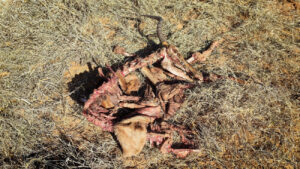
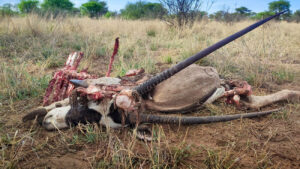
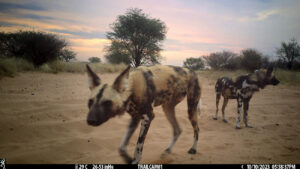
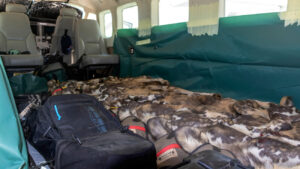
Conservation: The Vital Role of Research and Monitoring
Research plays a crucial role in African wild dog monitoring. By studying their populations, movements, social dynamics, and ecological interactions, we gain a deeper understanding of their needs and the threats they face on Khamab Kalahari Reserve. This information gathered from wild dog monitoring informs effective management strategies on the reserve, and guides decisions to possibly translocate wild dogs to other areas in Africa for the conservation of the species.
Ready to Make a Difference? Begin Your Wild Dog Monitoring Journey? Contact us today!
More questions, read our FAQs
More FAQ’s
Our Location
